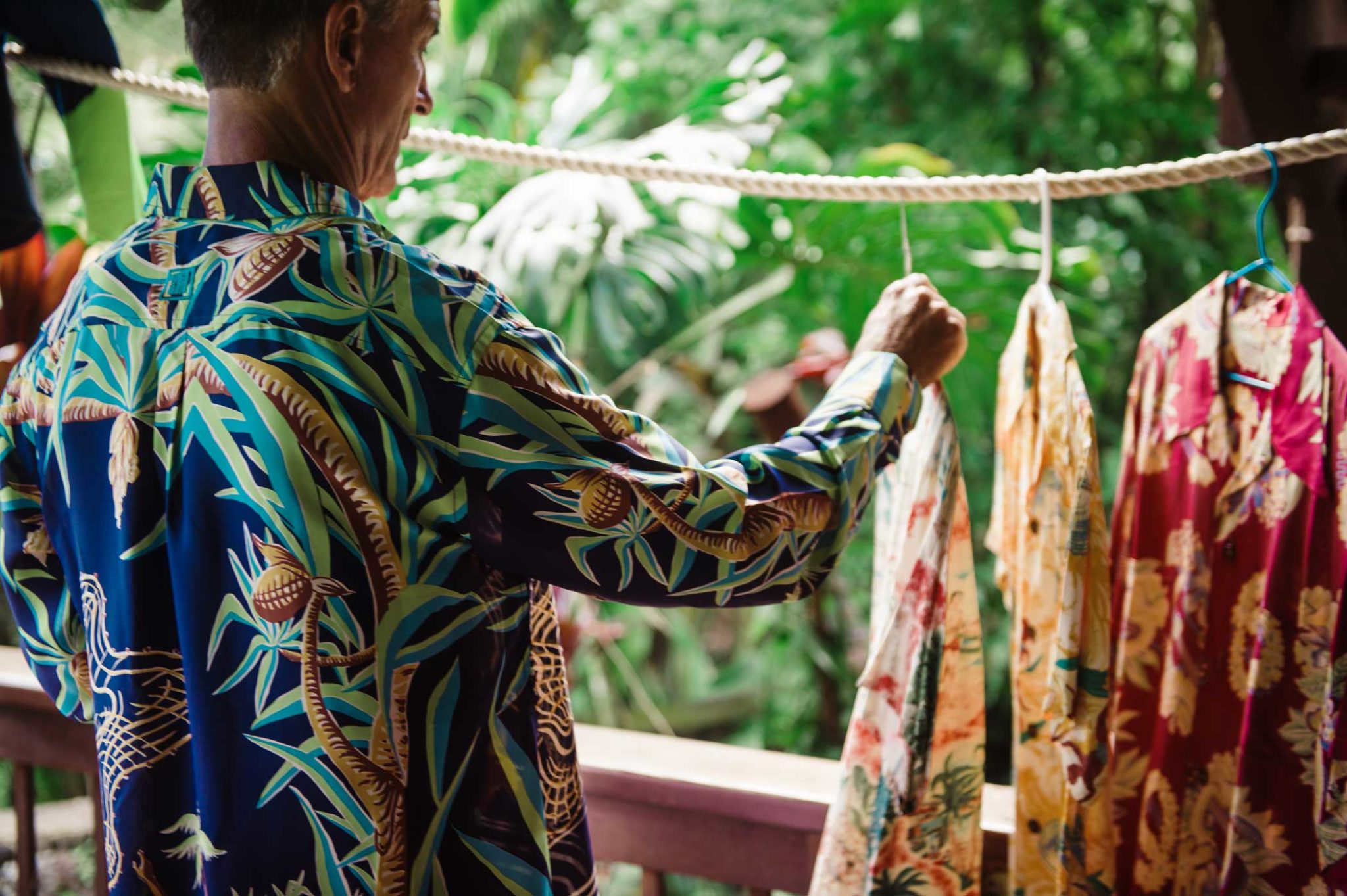Image by John Hook
Dale Hope, the “author of the Aloha shirt,” has spent nearly half a century immersed in the prints of the islands.
“It’s so special up here,” says Dale Hope on his Pālolo Valley lānai. His redwood pole house, which looks and feels like a treehouse, is draped with vegetation on all sides. Occasional birdsong interrupts the quiet whirring of palms rustling in the wind. Endlessly inspired by such nature, as well as the cultures of the only home he has known, Dale has spent the majority of his life immersed in the printed and painted textiles of Hawai‘i.
In the 1970s, Dale began working for the garment manufacturing business that his father, Howard R. Hope, started in 1953, the year Dale was born. What began as schlepping fabric bolts at his dad’s factories became a lifetime of singular devotion.
Together, they launched menswear label, HRH—short for His Royal Highness, and also his father’s initials—to accompany Howard’s ongoing womenswear brand, Sun Fashions of Hawaii.
It would have been simple enough to make this resort wear in perpetuity, but the young Dale was excited by the shirts he and his surfer friends wanted to wear, and so he capitalized on his resources to create several additional lines, starting with T-shirts under the Hawaiian Style brand, and then moving on to aloha shirts under Kahala by HRH. (Kahala had been one of the first well-established aloha shirt brands in Hawai‘i, but it had gone dormant, and Dale was eager to revive it.)
In the decades to follow, he went on to create some of the most popular and enduring aloha shirts in the world.
I’m not really into fashion. But I am really interested and excited to talk aloha shirts and create shirts.
Dale Hope

“I’m not really into fashion,” Dale insists. “But I am really interested and excited to talk aloha shirts and create shirts. Aloha shirts are what told the story of Hawai‘i to the world.” His adoration for what he calls “the emblem of Hawai‘i” is lovingly depicted in The Aloha Shirt.
Rereleased in 2016, approximately 16 years after he debuted the first edition, the remastered 400-page book is as much a testament to Dale’s passion as it is a living history of what is known as the “Hawaiian shirt” on the mainland. Amalgams of his own rich experiences, and memories of elders in the manufacturing scene, paint a picture of the infancy of the industry as the birth of an art form. Marvelous scenes and lush, hand-brushed prints parallel the text.
Dale is rhapsodic in his description of artists like Elsie Das, who in 1936 collaborated with her brother-in-law, G.J. Watumull, to reproduce Hawai‘i-inspired prints on raw silk shirts, as well as John Keoni Meigs, who painted scenes from exotic Hawai‘i in the many radiant colors of the islands.
“I actually got to sit down and talk with these people,” says Dale, who remains in awe of having had first-person history lessons from those who lived during that nostalgic slice of history, when visitors arrived to the islands in increasing droves. The business owner and historian also recalls the late 20th century retailers that propelled the aloha shirt through decades of popularity by creating and selling the finest designs the industry had to offer.
As to what these prints look like, Dale sums up the essence of an aloha shirt as such: “It must have a reverence to whatever it is, some singular essence of Hawai‘i that is your starting point. A flower, a fish, a canoe, a tree. These things have stories. You want to dutifully, properly, tell that story through the shirt.”
The Aloha Shirt is available at select stores and online at thealohashirt.com.
This story is part of our The Good Life Issue.


